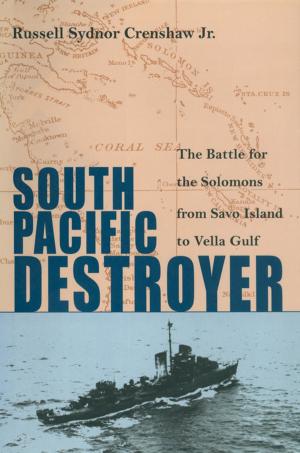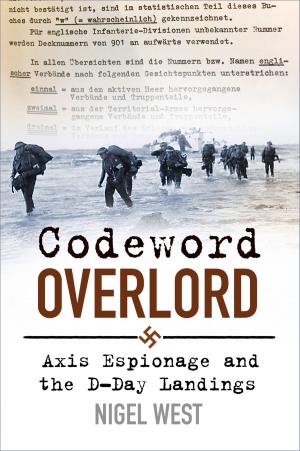Terror By Night
The official history of the SBS and the Greek Sacred Squadron 1943-1945
Nonfiction, History, Greece, Military, World War II| Author: | ISBN: | 9781910533291 | |
| Publisher: | Nine Elms Books Ltd | Publication: | June 10, 2017 |
| Imprint: | Nine Elms Books Ltd | Language: | English |
| Author: | |
| ISBN: | 9781910533291 |
| Publisher: | Nine Elms Books Ltd |
| Publication: | June 10, 2017 |
| Imprint: | Nine Elms Books Ltd |
| Language: | English |
In the Aegean, between 1943 and 1945, the Raiding Forces – a combination of British Special Forces (primarily the SBS) and the Greek Sacred Squadron – established a reign of terror and suspense in the hearts of a German force a hundred times its number.
In this very readable official report, the founding, training and composition of Raiding Forces are dealt with in sufficient detail to show what manner of men comprised the patrols, and Terror By Night does not fog the reader’s mind with technical facts of interest only to the professional staff officer.
This account of some raids, attacks and reconnaissances (out of a total of 381 operations) show the three phases of Raiding Forces’ rising power in the islands and each is typical of a score of others not included for the sake of brevity.
The itemised statistics show that, while the total of Raiding Force casualties was extremely light, the large casualties inflicted on the Axis invaders were out of all proportion to the number of men who caused them. Proof of the gallantry of the troops, who made Raiding Forces famous, is shown by the number of officers and men decorated.
In their operations British and Greek troops of Raiding Forces inflicted 4,131 known casualties on the enemy, of which over 60% were sustained by the Germans. Other casualties were undoubtedly inflicted, but never made public.
During the same period the Raiding Force’s own casualties totalled 93 – of whom 16 were killed, 3 died of wounds and the remaining 74 were either wounded or captured (of these losses 58 were sustained by the Greeks and 34 by British personnel).
The contrasted Allied and Axis figures show that Raiding Forces inflicted approximately 47 casualties for every one they sustained. These figures exclude those of the surrendered garrisons in the Dodecanese.
In a fight, waged largely at close quarters, determination and a refusal to admit the possibility of defeat were the deciding factors. The British and Greek troops were united as a single fighting entity.
As long as Greece, and the world, remember Thermopylae and Leonidas, King of Sparta and his 300 men who fell there, holding the pass against the Persians, they should remember the 400 men of Raiding Forces.
With never more than 400 men available, Raiding Forces created a reign of terror for Nazi and collaborator alike. Everything the Germans could put against them – ranging from the destroyers of the Kriegsmarine to mere booby-traps – proved useless against a new “Terror by Night”.
In the Aegean, between 1943 and 1945, the Raiding Forces – a combination of British Special Forces (primarily the SBS) and the Greek Sacred Squadron – established a reign of terror and suspense in the hearts of a German force a hundred times its number.
In this very readable official report, the founding, training and composition of Raiding Forces are dealt with in sufficient detail to show what manner of men comprised the patrols, and Terror By Night does not fog the reader’s mind with technical facts of interest only to the professional staff officer.
This account of some raids, attacks and reconnaissances (out of a total of 381 operations) show the three phases of Raiding Forces’ rising power in the islands and each is typical of a score of others not included for the sake of brevity.
The itemised statistics show that, while the total of Raiding Force casualties was extremely light, the large casualties inflicted on the Axis invaders were out of all proportion to the number of men who caused them. Proof of the gallantry of the troops, who made Raiding Forces famous, is shown by the number of officers and men decorated.
In their operations British and Greek troops of Raiding Forces inflicted 4,131 known casualties on the enemy, of which over 60% were sustained by the Germans. Other casualties were undoubtedly inflicted, but never made public.
During the same period the Raiding Force’s own casualties totalled 93 – of whom 16 were killed, 3 died of wounds and the remaining 74 were either wounded or captured (of these losses 58 were sustained by the Greeks and 34 by British personnel).
The contrasted Allied and Axis figures show that Raiding Forces inflicted approximately 47 casualties for every one they sustained. These figures exclude those of the surrendered garrisons in the Dodecanese.
In a fight, waged largely at close quarters, determination and a refusal to admit the possibility of defeat were the deciding factors. The British and Greek troops were united as a single fighting entity.
As long as Greece, and the world, remember Thermopylae and Leonidas, King of Sparta and his 300 men who fell there, holding the pass against the Persians, they should remember the 400 men of Raiding Forces.
With never more than 400 men available, Raiding Forces created a reign of terror for Nazi and collaborator alike. Everything the Germans could put against them – ranging from the destroyers of the Kriegsmarine to mere booby-traps – proved useless against a new “Terror by Night”.















